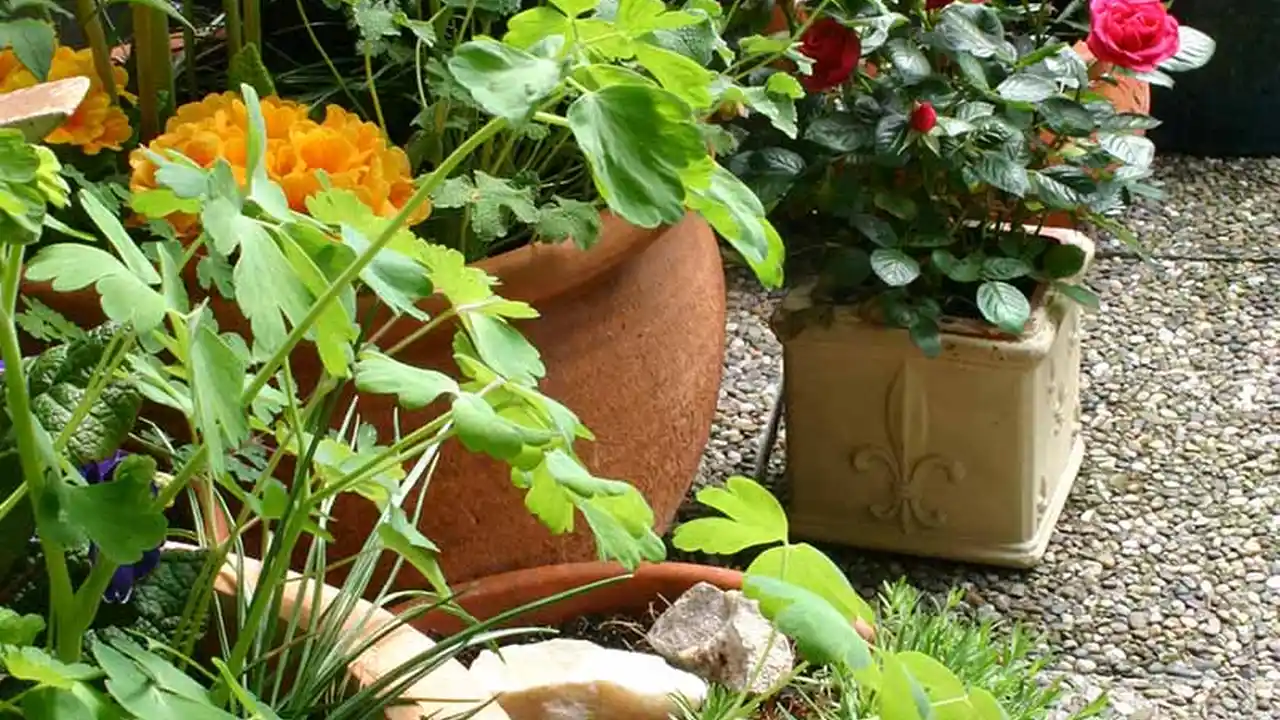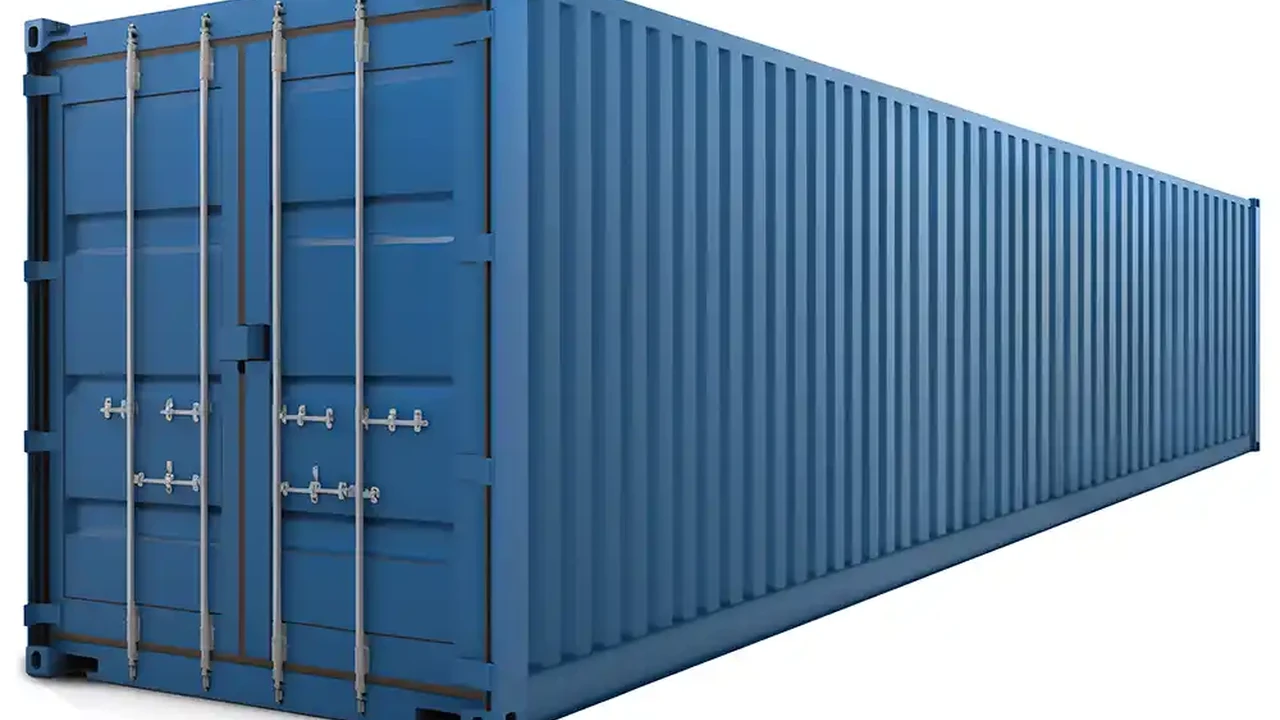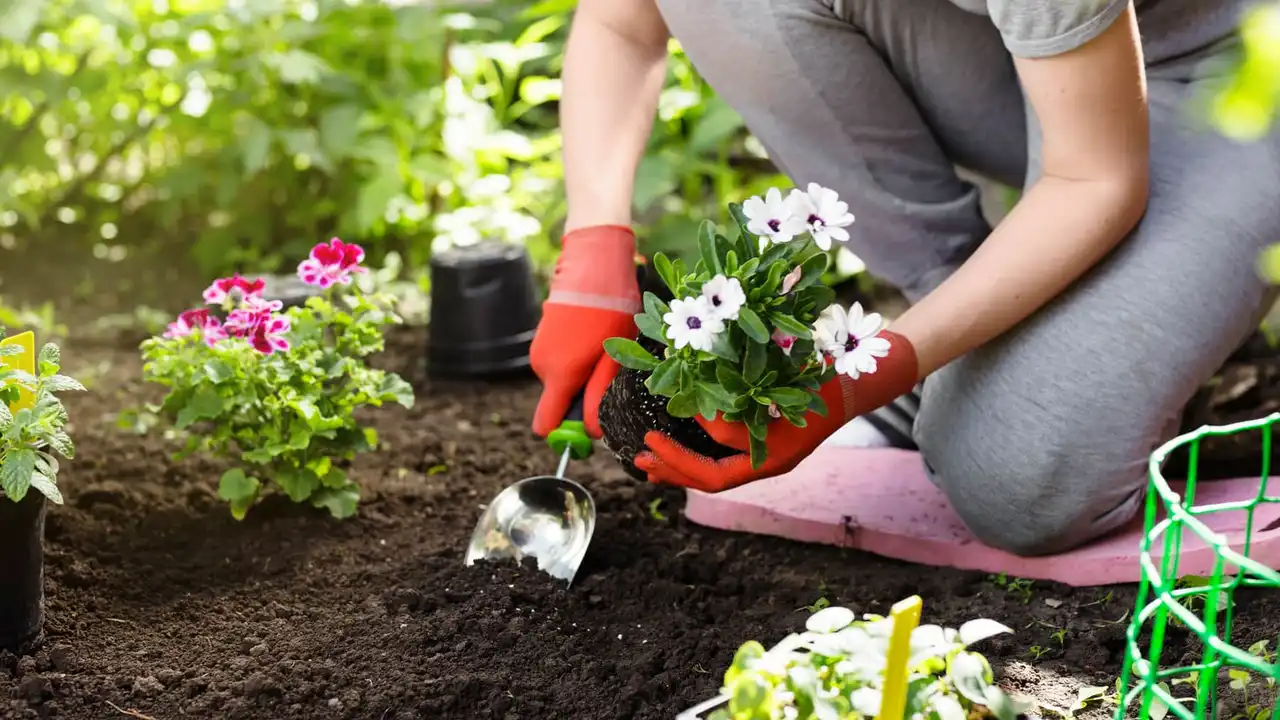Choosing the Right Pots and Containers Top 7 Options
Explore the top 7 types of pots and containers for beginner gardeners. Select the best options for your plants and space.

Understanding Your Container Gardening Needs
Before we jump into the different types of pots, let's quickly think about what you'll be growing and where. Are you planning on a small herb garden for your kitchen windowsill? Or maybe a vibrant display of annuals for your patio? Perhaps some delicious tomatoes on your balcony? The type of plant, its size, its water needs, and the environment it will live in all play a huge role in choosing the perfect container. Drainage is also super important – almost all plants hate sitting in soggy soil, so make sure your chosen pot has drainage holes!
Terracotta Clay Pots The Classic Choice for Gardeners
Ah, terracotta! These reddish-brown, porous pots are probably what first comes to mind when you think of a plant pot. They're classic for a reason, offering a rustic charm that complements almost any plant. But they come with their own set of quirks.
Pros of Terracotta Clay Pots
- Excellent Breathability: Terracotta is porous, meaning it allows air and moisture to pass through the pot walls. This helps with aeration for the roots and prevents waterlogging, which is a common killer for many plants.
- Evaporative Cooling: The porosity also means water evaporates from the sides of the pot, which can help keep the soil and roots cooler in hot climates.
- Heavy and Stable: Their weight makes them less likely to tip over, especially for larger plants or in windy conditions.
- Aesthetic Appeal: They have a timeless, natural look that many gardeners adore.
Cons of Terracotta Clay Pots
- Dries Out Quickly: Because they're so breathable, terracotta pots dry out much faster than other materials. This means more frequent watering, especially in hot, sunny conditions. Not ideal for plants that prefer consistently moist soil or for gardeners who forget to water often.
- Fragile: They can easily crack or break if dropped or exposed to freezing temperatures while wet.
- Salt Buildup: Over time, mineral salts from water and fertilizer can leach through the pot walls, leaving a white residue. While not harmful to the plant, it can be unsightly.
- Heavy: While stability is a pro, their weight can be a con if you need to move them frequently.
Recommended Terracotta Clay Pots
- Standard Terracotta Pot (various sizes): For general use, a classic terracotta pot is always a good start. Look for ones with a good drainage hole.
- Brand Recommendation: Deroma Terracotta Pots are widely available and offer good quality. A 10-inch Deroma Terracotta Pot might cost around $15-$25.
- Usage Scenario: Perfect for succulents, cacti, herbs, and other plants that prefer drier conditions. Also great for adding a traditional touch to patios and balconies.
Plastic Pots The Lightweight and Versatile Option
Plastic pots are ubiquitous in nurseries and garden centers, and for good reason. They're affordable, lightweight, and come in an endless array of colors and styles. They've come a long way from flimsy black nursery pots!
Pros of Plastic Pots
- Lightweight: Easy to move around, even when filled with soil and plants.
- Retains Moisture: Unlike terracotta, plastic is non-porous, so it holds moisture in the soil for longer. This means less frequent watering.
- Durable: Most plastic pots are quite durable and resistant to cracking, though some cheaper ones can become brittle over time with UV exposure.
- Affordable: Generally the most budget-friendly option.
- Variety: Available in countless colors, shapes, and sizes to match any aesthetic.
Cons of Plastic Pots
- Poor Breathability: Lack of air circulation can sometimes lead to root rot if overwatered.
- Can Overheat: In direct sun, dark-colored plastic pots can absorb a lot of heat, potentially cooking roots.
- Less Aesthetic for Some: While designs have improved, some gardeners find plastic less aesthetically pleasing than natural materials.
- Environmental Concerns: Made from petroleum products, and while many are recyclable, not all are.
Recommended Plastic Pots
- Self-Watering Planters: These are fantastic for beginners as they have a reservoir that provides water to the plant as needed.
- Brand Recommendation: Lechuza Self-Watering Planters are high-quality and stylish. A Lechuza CUBE 14 (approx. 5.5 inches) might be around $30-$50.
- Usage Scenario: Ideal for moisture-loving plants like ferns, impatiens, and many vegetables. Great for busy gardeners or those in hot climates. Also perfect for indoor plants where you want to minimize watering frequency.
Ceramic Glazed Pots The Decorative Statement Piece
Ceramic pots, often glazed, offer a beautiful, polished look that can really elevate your plant display. They come in an incredible range of colors, patterns, and finishes, making them true decorative elements.
Pros of Ceramic Glazed Pots
- Highly Decorative: Their primary appeal is their aesthetic versatility. You can find a ceramic pot to match any decor.
- Retains Moisture: Like plastic, the glaze makes them non-porous, so they hold moisture well.
- Heavy and Stable: Similar to terracotta, their weight provides good stability.
- Durable: Generally quite durable, though the glaze can chip if mishandled.
Cons of Ceramic Glazed Pots
- Expensive: Often one of the pricier options, especially for larger or artisan pieces.
- Heavy: Can be very heavy, making them difficult to move once filled.
- Fragile: Can crack or break if dropped or exposed to freezing temperatures (if water is absorbed into any unglazed parts).
- Poor Breathability: The non-porous nature means less air circulation to the roots, requiring careful watering.
Recommended Ceramic Glazed Pots
- Decorative Glazed Planters: Look for unique designs that complement your home or garden style.
- Brand Recommendation: Many local nurseries and home decor stores carry a wide range. Online, brands like Riviera Planters offer stylish options. A medium-sized (12-14 inch) glazed ceramic pot can range from $40-$100+.
- Usage Scenario: Perfect for indoor plants, patio focal points, or anywhere you want to make a strong visual statement. Good for plants that prefer consistent moisture.
Fabric Grow Bags The Smart Choice for Root Health
Fabric grow bags have gained immense popularity in recent years, especially among vegetable gardeners. They're made from breathable, non-woven fabric, often recycled materials, and offer some unique benefits for root development.
Pros of Fabric Grow Bags
- Excellent Air Pruning: This is their superpower! When roots reach the edge of the bag, they are "air-pruned" (exposed to air), which encourages the plant to grow more fibrous feeder roots instead of circling around the pot. This leads to a healthier, more efficient root system.
- Prevents Root Circling: No more root-bound plants!
- Superior Drainage and Aeration: The fabric allows for excellent drainage and air circulation, preventing waterlogging and promoting healthy roots.
- Lightweight and Portable: Even large bags are relatively easy to move when empty, and they fold flat for storage.
- Affordable: Generally very cost-effective, especially for larger sizes.
- Temperature Regulation: The breathable fabric helps dissipate heat, keeping roots cooler in hot weather.
Cons of Fabric Grow Bags
- Dries Out Quickly: Similar to terracotta, their breathability means they dry out faster, requiring more frequent watering.
- Less Aesthetic for Some: Their utilitarian look might not appeal to everyone, especially for formal garden designs.
- Durability Varies: Quality can vary; some cheaper bags might degrade faster in direct sunlight.
- Can Be Messy: Water can seep through the sides, potentially staining surfaces if placed indoors without a tray.
Recommended Fabric Grow Bags
- VIVOSUN Grow Bags: A popular and reliable brand. A 5-pack of 5-gallon VIVOSUN Grow Bags might cost around $15-$25.
- Smart Pots: Considered a premium brand, known for their durability and effectiveness. A 10-gallon Smart Pot could be around $10-$15 each.
- Usage Scenario: Absolutely fantastic for vegetables like tomatoes, potatoes, peppers, and leafy greens. Also great for growing herbs, strawberries, and even small fruit trees. Perfect for temporary setups, balconies, or urban gardens where space is at a premium.
Wooden Planters The Natural and Robust Option
Wooden planters, often made from cedar, redwood, or treated pine, offer a natural, rustic look that blends beautifully into garden settings. They can be quite substantial and are excellent for larger plants or creating raised garden beds.
Pros of Wooden Planters
- Natural Aesthetic: Blends seamlessly with outdoor environments, offering a warm, organic feel.
- Good Insulation: Wood provides some insulation, protecting roots from extreme temperature fluctuations.
- Durable (if treated/resistant wood): Cedar and redwood are naturally rot-resistant, and treated pine can last for many years.
- Large Sizes Available: Easy to construct or purchase in very large sizes, suitable for substantial plants or multiple plantings.
Cons of Wooden Planters
- Can Rot Over Time: Unless made from naturally resistant wood or properly treated, wood will eventually rot, especially when in constant contact with moist soil.
- Heavy: Larger wooden planters can be very heavy and difficult to move once filled.
- Maintenance: May require sealing or staining to prolong their life.
- Cost: Can be more expensive than plastic, especially for larger, high-quality wood.
Recommended Wooden Planters
- Cedar Raised Garden Beds: Excellent for growing a variety of vegetables and herbs.
- Brand Recommendation: Greenes Fence Company Raised Garden Beds are popular and easy to assemble. A 4ft x 4ft x 10.5in cedar raised bed might cost around $80-$150.
- Usage Scenario: Ideal for creating mini raised garden beds for vegetables, herbs, or even small shrubs and trees. Great for adding a natural, structured look to patios or larger garden spaces.
Metal Containers The Modern and Industrial Look
Metal containers, often made from galvanized steel, aluminum, or even repurposed items like old troughs, offer a sleek, modern, or industrial aesthetic. They can be very durable and make a bold statement.
Pros of Metal Containers
- Modern Aesthetic: Perfect for contemporary garden designs or industrial-chic looks.
- Extremely Durable: Metal is very strong and resistant to cracking or breaking.
- Long-Lasting: Galvanized steel and aluminum are rust-resistant and can last for decades.
- Variety of Shapes: Available in unique shapes, including long troughs and tall cylinders.
Cons of Metal Containers
- Heat Conduction: Metal conducts heat very well, meaning the soil can get extremely hot in direct sunlight, potentially damaging roots. This is a significant concern in hot climates.
- Heavy: Can be quite heavy, especially larger ones.
- Cost: Often more expensive than plastic or terracotta.
- Drainage: Ensure they have adequate drainage holes, as some repurposed items might not.
Recommended Metal Containers
- Galvanized Steel Troughs: Great for creating a modern raised bed or herb garden.
- Brand Recommendation: Many farm supply stores or garden centers carry galvanized troughs. A 2ft x 4ft galvanized stock tank can range from $70-$150.
- Usage Scenario: Best for cooler climates or areas with partial shade to prevent overheating. Excellent for succulents, ornamental grasses, or creating a striking focal point.
Self-Watering Planters The Low-Maintenance Solution
While we touched on plastic self-watering planters, this category deserves its own mention because the technology can be incorporated into various materials. These planters have a built-in reservoir that holds water, which the plant then draws up as needed, usually through a wicking system. They are a game-changer for busy gardeners or those who travel frequently.
Pros of Self-Watering Planters
- Reduced Watering Frequency: This is the biggest benefit! You fill the reservoir, and the plant takes what it needs, often for days or even weeks.
- Consistent Moisture: Provides a steady supply of water to the roots, preventing the stress of drying out and overwatering.
- Efficient Water Use: Less water is lost to evaporation from the soil surface.
- Prevents Overwatering: The plant only takes what it needs, reducing the risk of root rot from soggy soil.
- Nutrient Retention: Nutrients are less likely to leach out with excess watering.
Cons of Self-Watering Planters
- Higher Initial Cost: Generally more expensive than traditional pots.
- Not for All Plants: Not suitable for plants that prefer very dry conditions (like many succulents or cacti).
- Can Be Tricky to Start: Sometimes, you need to top-water for the first week or two until the roots establish and reach the wicking system.
- Algae Growth: In some designs, algae can grow in the reservoir if exposed to light.
Recommended Self-Watering Planters
- EarthBox Original Garden Kit: A highly regarded self-watering system for growing vegetables. An EarthBox kit (approx. 29\"L x 13.5\"W x 11\"H) can cost around $60-$80.
- Glowpear Urban Garden: A stylish and modular self-watering planter, great for urban spaces. A Glowpear Urban Garden (approx. 31.5\"L x 18.5\"W x 19.5\"H) might be around $150-$200.
- Usage Scenario: Excellent for thirsty plants like tomatoes, peppers, cucumbers, and most leafy greens. Perfect for busy individuals, vacationers, or anyone looking to simplify their watering routine.
Choosing Your Perfect Pot The Final Decision
So, there you have it – the top 7 types of pots and containers for your gardening adventures! Remember, there's no single "best" option; the ideal choice depends on your specific plants, your climate, your aesthetic preferences, and your gardening style. Don't be afraid to mix and match! A terracotta pot for your succulents, a fabric grow bag for your tomatoes, and a beautiful ceramic pot for your indoor fern – that's the beauty of container gardening. Happy planting!
:max_bytes(150000):strip_icc()/277019-baked-pork-chops-with-cream-of-mushroom-soup-DDMFS-beauty-4x3-BG-7505-5762b731cf30447d9cbbbbbf387beafa.jpg)






